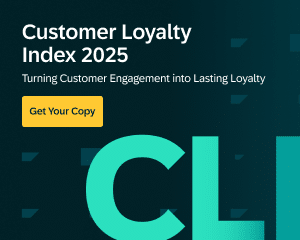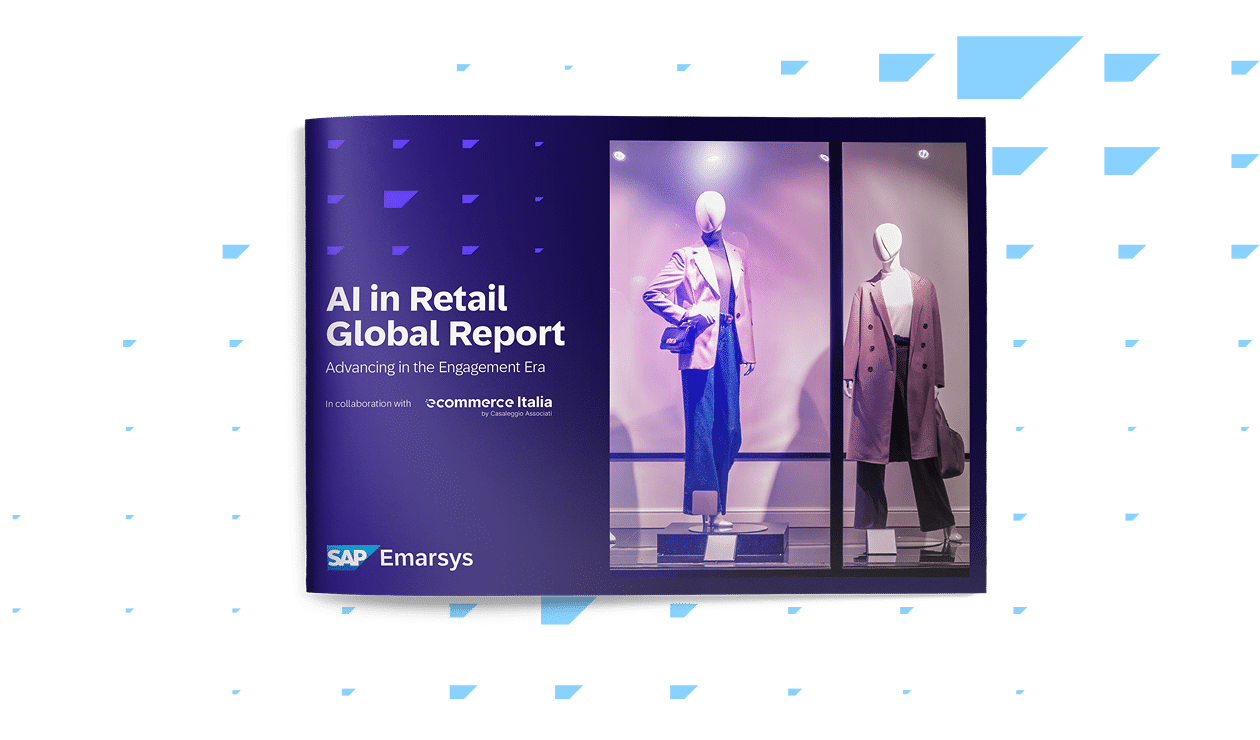Personalization has become the defining factor of modern marketing, separating brands that connect from those that fade into the background. Customers expect experiences that feel relevant, intuitive, and human, and they notice when brands fall short.
The following statistics from SAP Emarsys research reveal how consumers really feel about personalization in 2025, how marketers are using AI to meet those expectations, and where the biggest opportunities for improvement still lie.
Consumer Expectations and Experiences
Customers are becoming more selective about what they consider truly personal. They appreciate the convenience of AI and tailored experiences, but they also expect brands to understand who they are beyond data points. These insights show how people respond to personalization today and what they still want to see improved.
69% of consumers are satisfied with the personal product recommendations they receive. [AI in Retail 2025]
Most shoppers now recognize when a brand is using data well. Almost seven in ten say they’re satisfied with the product recommendations they get, which shows that personalization is working when it feels natural and relevant. The more marketers fine tune their recommendations using real behavior and purchase history, the more they can guide customers from browsing to buying.
65% are satisfied with personalized offers and marketing materials. [AI in Retail 2025]
Personalization goes far beyond product suggestions. When offers and messages reflect real interests, customers are more likely to engage and stay loyal. It’s not only about what’s being sold, but how it’s presented, and whether the tone and timing feel right for the individual.
25% of consumers want brands to use AI to make the shopping experience more personal. [AI in Retail 2025]
Even as personalization becomes more common, a quarter of consumers still want more. That means the opportunity now lies in how brands use AI, not just whether they use it. The next level of personalization comes from anticipating needs, removing friction, and creating experiences that feel effortless across every touchpoint.
How Marketers Are Using Personalization
Marketers have embraced AI as a core part of their strategy, but many still focus on optimization rather than innovation. These figures highlight how the best teams are using personalization to move from efficiency to creativity and to deliver experiences that feel fresh and relevant every time.
79% of marketers use AI to personalize content and campaigns. [AI in Retail 2025]
Almost eight in ten marketers now rely on AI to tailor content, which shows how much personalization has become a baseline expectation. But there’s a difference between personalization that performs and personalization that inspires. The challenge now is using AI not just to automate, but to create campaigns that adapt to each person’s context in real time.
39% of marketers use AI to create new experiences for customers. [AI in Retail 2025]
While most marketers use AI to optimize existing processes, only a smaller group is using it to invent entirely new experiences. That’s where the real competitive advantage lies. By experimenting with things like conversational commerce, AI-driven discovery, and predictive customer journeys, these brands are setting new standards for what personalization can be.

The Personalization Gap
Despite years of progress, there’s still a clear gap between what brands think they deliver and what customers actually feel. Many people still say that marketing feels generic or disconnected from their real needs. Closing that gap means bringing empathy back into the process and making personalization feel more human again.
40% of consumers say brands don’t understand them as a person. [AI in Retail 2025]
Almost half of consumers still feel like brands don’t really know them. Personalization should go beyond transactions to show genuine understanding. That means using insights to shape tone, timing, and messaging so each interaction feels like it was created for that person and not a segment in a spreadsheet.
33% of consumers say brands don’t personalize content to meet their needs. [AI in Retail 2025]
A third of consumers still receive content that doesn’t fit what they actually care about. This shows the limits of rule-based personalization. When brands connect unified data to adaptive AI, they can respond in the moment instead of relying on outdated assumptions.
44% of consumers say most marketing emails aren’t relevant. [AI in Retail 2025]
Email remains one of the biggest personalization challenges. Too many brands still rely on generic blasts that ignore behavior or timing. To make email work again, marketers need to move toward contextual messages that feel like a natural part of the customer’s day rather than an interruption.
84% of brands do not excel in differentiating themselves through personalization. [Customer Loyalty Index 2025]
Most brands talk about personalization, but only a small number do it in a way that sets them apart. Real differentiation happens when brands use personalization to serve, not just to sell. The goal is to make customers feel understood, not targeted.
16% of consumers say brands don’t personalize at all. [Customer Loyalty Index 2025]
Even though this number might seem small, it represents a real missed opportunity. Customers now expect personalization as standard, and when it’s missing, they notice. Consistency is the key, ensuring that every interaction reinforces the same thoughtful and personal experience.
Personalization as a Driver of Loyalty
Personalization is one of the strongest ways to build loyalty because it shows customers that their relationship with your brand matters. People are more likely to stay when they feel seen, valued, and understood. These findings reveal how personalized experiences help turn one-time buyers into long-term advocates.
21% of consumers expect more personalized experiences as a loyalty incentive. [Customer Loyalty Index 2025]
Customers no longer see personalization as a bonus. They expect it as part of their loyalty experience. Tailoring communication, offers, and recommendations to each customer’s habits and preferences can create a sense of connection that keeps them coming back.
24% of global consumers are more loyal to brands offering personalized deals. [Customer Loyalty Index 2025]
When offers feel exclusive and relevant, they carry more emotional weight. Personalized deals show that a brand is paying attention, rewarding loyalty with experiences that feel earned rather than mass-produced. This is how loyalty becomes a relationship rather than a routine.
23% of consumers say batch and blast marketing damages their loyalty. [Customer Loyalty Index 2025]
Generic campaigns can do more harm than good. When customers feel like they’re being spoken to in a crowd instead of a conversation, it erodes trust. Personalization ensures that each touchpoint feels intentional and genuine, which strengthens long-term loyalty.
28% of consumers switch brands out of boredom, highlighting the need for relevance. [Customer Loyalty Index 2025]
Even loyal customers lose interest when engagement feels repetitive. Keeping things fresh means constantly reimagining how to surprise and delight customers. Dynamic personalization, creative storytelling, and timely experiences all help keep attention high.
Gen Z loyalty is more driven by personal relevance than discounts. [Customer Loyalty Index 2025]
Younger consumers aren’t swayed by points or promotions alone. They expect brands to show up in ways that feel current, genuine, and emotionally intelligent. Real time personalization on channels like social media and mobile is what wins their attention and trust.










